The Three Musketeers
November 18, 2022
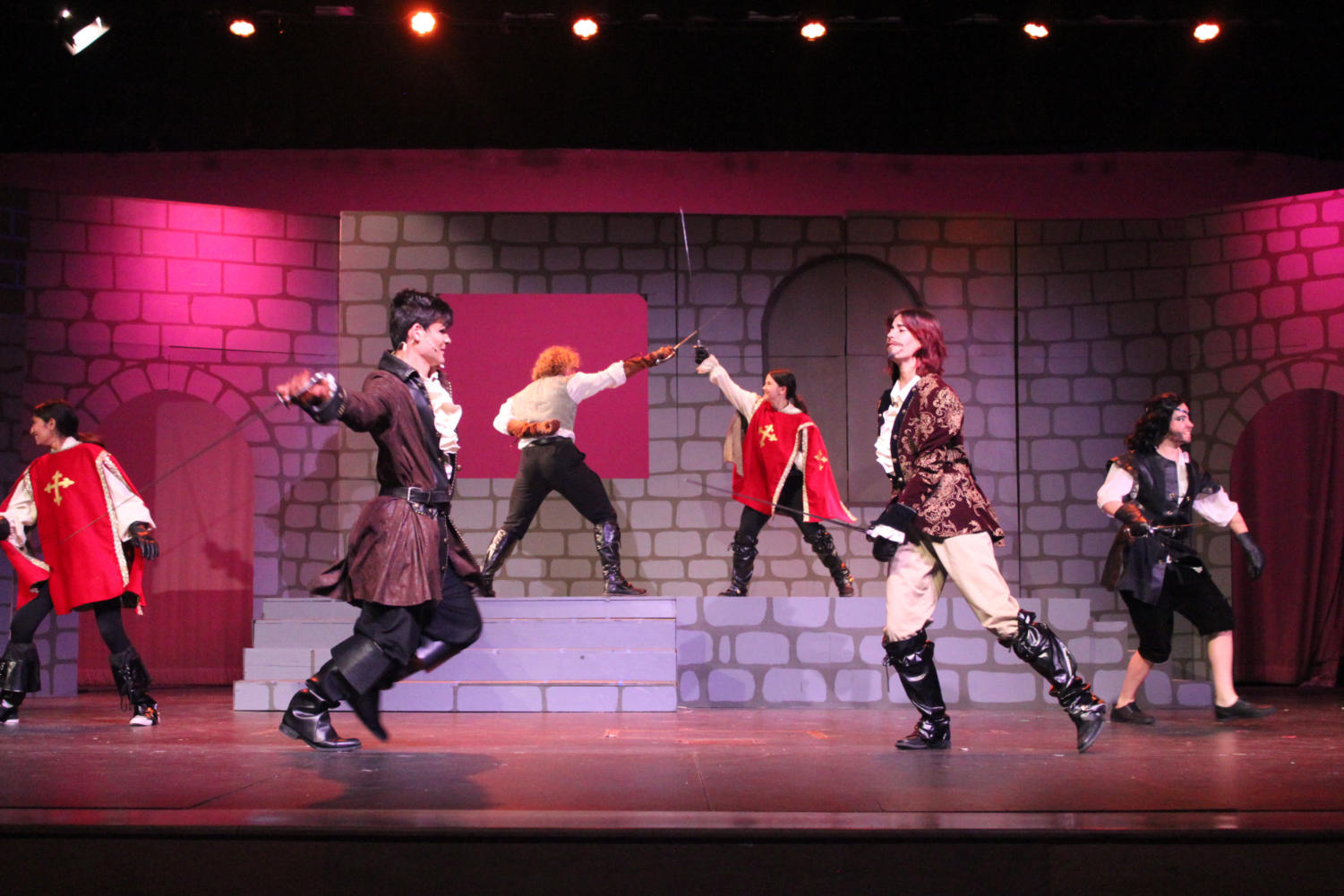
On opposing sides of the theater, David Azcona (12) and Kyle Dillon (12) squared off with swords in hand. Dressed in a black and gold cassock, adorned with a white Fleur-de-lis, Dillon exuded the exaggerated swagger of a monarch’s musketeer. Azcona, with rugged attire and a face set in steel, held his gaze. Both raised their swords to their faces in salute and bowed forward, sweeping the blades outward as they dipped their heads. It was evident a duel was about to commence.
Then the fight began.
Shattering the silence, Dillon lunged towards Azcona, thrusting his sword forward as he closed the distance between the two. Just as quickly, Azcona parried, a flick of the wrist that diverted Dillion’s blade away from its target with a satisfying clink. As Dillion recovered back to en garde, Azcona seized Dillon’s moment of imbalance and switched to an offensive stance, jabbing and stabbing at Dillion in a blur of metal as Dillion blocked each strike with deft parries.
“Hold!” yelled Dillion. A procession of students carrying a large wood panel painted to look like stone bricks entered their battlefield.
“Hold,” echoed Azcona, sheathing his sword at his side.
At the front of the stage stood Jonathan McPherson (12) and Ava Bacculi (12) quietly observing the fight they had spent weeks choreographing. Only 26 hours remained until the opening of Westview Theater Company’s rendition of The Three Musketeers, and every detail had to be perfect.
With Mamma Mia! raking in a whopping last spring, Westview Theater Company decided to invest extra money into this year’s fall play and put on a spectacle of a production, Ken Ludwig’s The Three Musketeers.
“We’re trying to take steps to up the Theater Company,” McPherson said. “We have been trying to submit to more competitions and fight choreography is something you don’t often see in high-school productions. We’ve been keeping this show in our back pocket ever since competitions shut down due to COVID and now we have the resources due to Mamma Mia! to put it on.”
The show follows D’Artagnan of Gascony, played by Azcona, as he and his sister Sabine swashbuckle their way through 1600s France, teaming up with The Three Musketeers in a war on the cunning Cardinal Richelieu. Since the show demands a significant amount of swordplay and hand-to-hand combat, theater director Robert Townsend elected two fight captains to lead the duels in the production.
McPherson has a background in fencing, which made him an obvious choice to be fight captain. However, he says his obsession with medieval swordplay during the COVID-19 lockdown was what really prepared him for the position.
“One of my big COVID hobbies was learning about historical weaponry and martial arts from Europe,” McPherson said. “I did enough extensive research on the Spanish versus German versus French rapiers and the differentiations between French fencing and Spanish destreza combat to be able to apply these ideas to stage combat.”
Bacculi also had an extensive background in combat, with 12 years in Taekwondo, leading Townsend to choose her as the second fight captain. Bacculi took on the show’s hand-to-hand combat with the cast, as well as co-captaining fencing, a skill she learned and taught simultaneously.
“Taking on the position of captain [meant] trying to stay ahead of the group [by] knowing things before they know them,” Bacculi said. “I want to stay informed all the time. Always. If I don’t know something, I’m the first person to ask the questions about that, because I want to make sure that if anybody has any questions, I can always be a source that someone can go to.”
McPherson and Bacculi weren’t necessarily alone. Townsend recognized the unique expertise the show demanded and brought onto the production Ben Cole, a professional fight choreographer who conceptualized the duel fundamentals. However, since Cole had other jobs he was working on, his main contributions were outlining the broad strokes of each fight. It was up to McPhearson and Bacculi to work with each actor to master fights until the actors looked like seasoned duelists.
“We choreograph [the fights] in sections, then do the first small section of the fight where we have maybe one or two people, and we assign those moves,” Bacculi said. “We’d run that a few times, then we’ll move on to the next section, where we may switch out some people so everyone can fight. ”
To truly bring the duels to life, the captains also encouraged the actors to bring character to the duels, forming what could be bland fights into pivotal story moments.
“[When first learning a] general swordfight, you have just the simple moves that you’re supposed to do,” Bacculi said. “Then you add character [through] how you do the moves. Do you swing [your sword] fast? Do you play around? How involved are you in this fight? It’s the little movements that change it out, everybody does the same swings, but they do it a little differently, and that’s how you act.”
Safety was of the utmost importance to the fight captains as they taught everyone the ins and outs of their respective duels. Although the rapiers used were designed specifically for stage combat, having been dulled and lacking pointed tips, with carelessness, they were still dangerous enough to mortally wound someone. To ensure that every actor was both comfortable and safe, the show had a strict “tips away from torsos” policy.
“If you have a blade onstage, people in the audience below can’t tell exactly where the tip is pointed,” McPherson said. “If someone were to advance, we want to make sure that their blade would not pierce into somebody’s torso. We actually have designated targeting areas so that if a blade were to slip or weave, it wouldn’t hit any vital [organs].”
Another safety protocol implemented was the speed at which performers fought. Actors were first taught their fights at 25% speed before moving to 50% and finally 75% speed, past which was the threshold at which force could become dangerous.
“If we took [the fights] to 100% speed and power, it would basically just be a real fight, so for the safety of the actors, we keep it at 75%,” McPherson said.
But keeping the speed of the fights at 75% isn’t just for the performers, it is also used to keep the audience engaged.
“With the rapier being a smaller and lighter sword, if somebody was really swinging it at 100%, it’d be hard for the audience to see,” McPherson said. “We want to have that dramatic tension, so we also keep the speed at 75% speed for the audience.”
Since the fights are so paramount to the show’s success, fight practice or “fight call” was hosted daily after school. Beginning in mid-September, fight calls consisted of running through the various fights of the show as well as teaching the other actors the safety protocols of stage dueling.
“Every day, when we have fight call, we have a list of fights to work on—the ones we think need the most help and improvement,” Bacculi said. “We go through those, and we have the choreography written down to keep track if people call holds.”
As the time left turned from months to weeks to days, fight calls began to be hosted both after school and during lunch, ensuring that each and every fight was perfect.
“We practice the fights so much because we need to know these duels like the back of our hands, [because] at the end of the day, there is someone else on the end of your sword and sometimes several,” McPherson said. “Drilling [the fights] in every day and just getting in that mnemonic memory [was paramount]. ”
Another important aspect of dealing with the show’s extensive combat lay in the costumes, which had to suit the physical rigor of combat. All cast members with swords, such as the Musketeers or Cardinal’s guards, wore specially made costumes that allowed for comfort, mobility and safety.
“Anyone who sword fights is going to keep their clothes rather tight, because [they] don’t want anything flying around and being caught on the swords,” Bacculi said. “We wear gloves and sword belts, belts specifically made for fighting with a loop for the sword. We make them prominent, and we make sure everyone wears clothes they can run and move in. [This goes for] characters’ shoes too; no one will be wearing heels while swordfighting.”
As the curtain closed on the final showing of the play, McPherson said he was filled with a bittersweet feeling. His stress was finally over. No longer did he have to worry about actors accidentally stabbing each other or if people would remember their precise parries and grapples. But at the same time, there was no other feeling like watching the duels he worked so hard to make onstage come to fruition. By the third showing, each duelist moved with a precise fluidity, as if the actors were dancing in a great ballet of clashing steel.
“It was great to see everyone appreciate what we worked so hard to create,” McPherson said. “I felt good that the actors felt and looked confident. I’ll definitely miss [being a fight captain], but the fact that we got the job done was more rewarding than any other feeling I’ll have.”




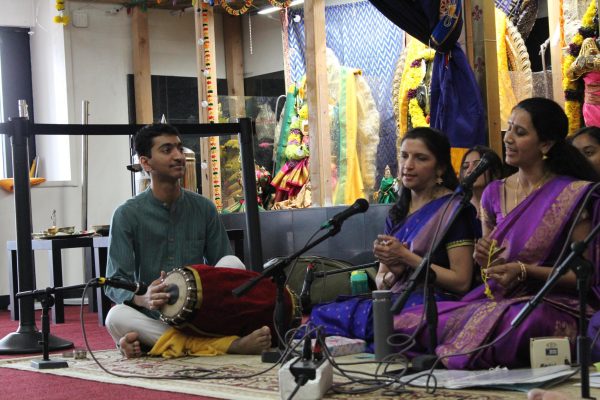
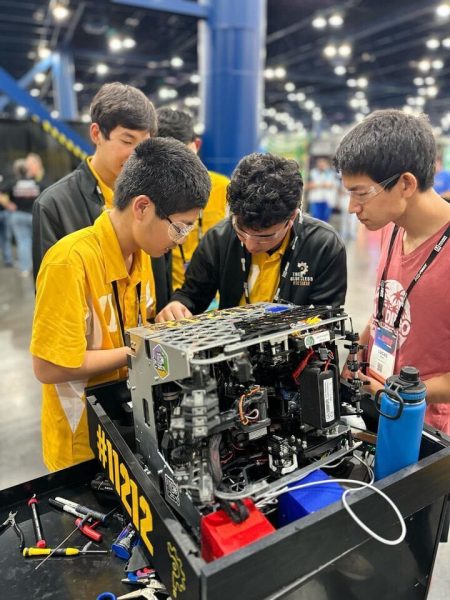
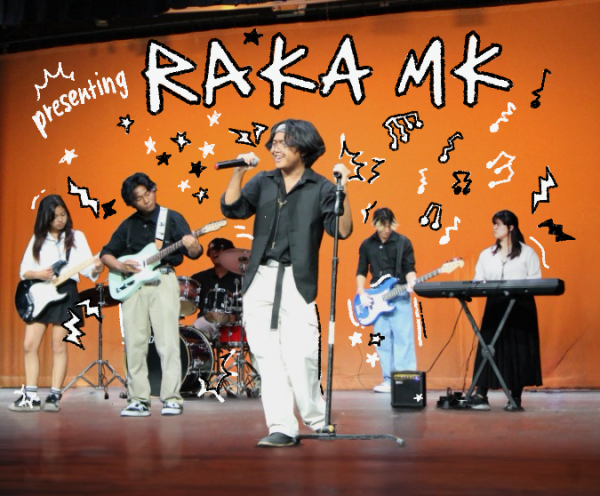
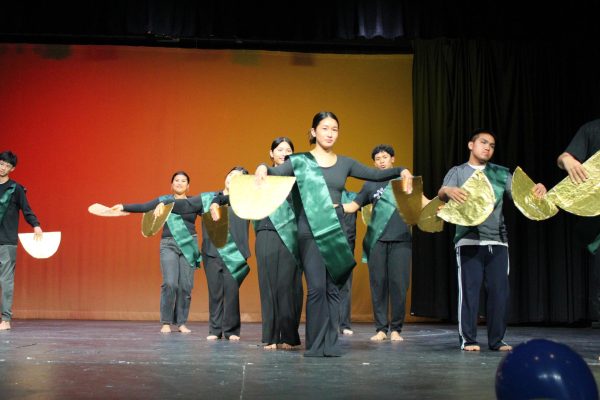
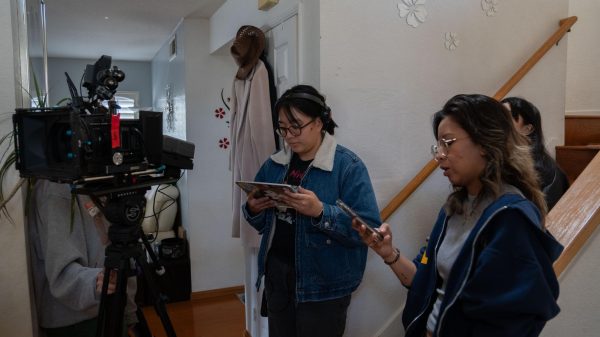
Madelyn Comstock • Nov 18, 2022 at 11:40 am
so cool